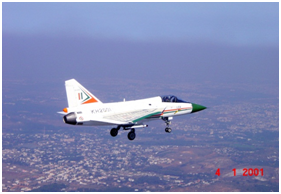SOURCE: AFI

In a recent address at the Indian Institute of Science (IISc), Bangalore, Dr. Kota Harinarayana, the visionary behind India’s Light Combat Aircraft (LCA) Tejas, unveiled the extraordinary challenges faced during the program’s inception.
The first flight of the LCA’s Technology Demonstrator (TD1) in 1998 was a monumental achievement, but it was accomplished under the most daunting circumstances. Coinciding with India’s nuclear tests, the nation found itself under stringent US sanctions, leaving the LCA project in a precarious position.
Dr. Harinarayana revealed that the project faced a series of unexpected setbacks from its key foreign collaborators. GE Controls, a vital partner in developing the Fly-by-Wire system, abruptly withdrew support without prior notice. Similarly, General Electric, the engine supplier for the GE 404 engine, ceased all assistance. To compound the challenges, BAE Systems, engaged as consultants for control law review, pulled out a year before the crucial first flight.
Amidst a climate of skepticism, with foreign media and intelligence agencies predicting the failure of the LCA project due to India’s perceived lack of expertise in safety-critical software, the Indian team persevered. The successful first flight was a testament to the ingenuity and determination of the Indian aerospace engineers, achieved without the support of the engine manufacturer, flight control system subcontractor, or the consultant responsible for ensuring control law safety.
Dr. Harinarayana’s revelations underscore the immense hurdles overcome by the LCA team, making the aircraft’s eventual success an even more remarkable feat.